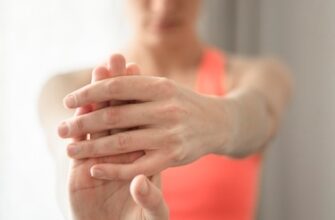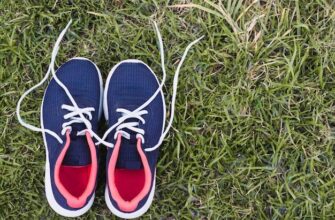How to Increase Muscle Strength at Home
Building muscle strength is essential for overall health and fitness. While many people believe that one needs to go to the gym to achieve this goal, there are actually numerous exercises and activities that can be done at home to increase muscle strength. Whether you are a beginner or an experienced fitness enthusiast, you can effectively work on building muscle strength in the comfort of your own home. In this article, we will explore various exercises, routines, and tips to help you increase your muscle strength without setting foot in a gym.
The Benefits of Increasing Muscle Strength
Before we delve into the exercises, it is important to understand why increasing muscle strength is beneficial:
- Improved physical performance and endurance
- Reduced risk of injury and improved joint stability
- Enhanced metabolism and weight management
- Better posture and improved body mechanics
- Increased bone density
- Enhanced overall strength and functional ability
The Importance of Proper Form
When performing any exercise to increase muscle strength, it is crucial to prioritize proper form and technique. This ensures that you are targeting the intended muscle groups and minimizing the risk of injury. Remember to warm up before each exercise session and listen to your body. If you experience any pain or discomfort, stop the exercise immediately.
1. Push-ups
Push-ups are a classic bodyweight exercise that primarily target the chest, shoulders, and triceps. They can be modified to suit different fitness levels.
How to do push-ups:
- Start by getting into a high plank position, with your hands slightly wider than shoulder-width apart and your body in a straight line from head to toe.
- Lower your body by bending your elbows, keeping them close to your body, until your chest almost touches the floor.
- Push yourself back up to the starting position, fully extending your arms.
- Repeat for the desired number of repetitions.
2. Squats
Squats are a compound exercise that targets the lower body, including the quadriceps, hamstrings, and glutes. They can be performed without any equipment.
How to do squats:
- Stand with your feet shoulder-width apart and your toes slightly turned out.
- Engage your core and lower your body by pushing your hips back and bending your knees, as if you were sitting back into a chair.
- Keep your chest up and your heels flat on the ground.
- Lower your body until your thighs are parallel to the ground, or as low as comfortable.
- Push through your heels to return to the starting position.
- Repeat for the desired number of repetitions.
3. Lunges
Lunges are another effective lower body exercise that targets the quadriceps, hamstrings, glutes, and calves.
How to do lunges:
- Start by standing with your feet hip-width apart.
- Take a big step forward with your right foot, lowering your body until your right thigh is parallel to the ground.
- Keep your front knee directly above your ankle and your back knee slightly above the ground.
- Push through your right heel to return to the starting position.
- Repeat on the other leg.
- Alternate legs for the desired number of repetitions.
4. Plank
The plank is a core exercise that strengthens the abdominals, back muscles, and stabilizing muscles. It can be done on both the forearms and the hands.
How to do a plank:
- Start by getting into a high plank position, with your hands or forearms shoulder-width apart and your body in a straight line from head to toe.
- Engage your core and hold the position for a specified amount of time.
- Focus on maintaining proper form and avoiding excessive sagging or arching of the back.
- Gradually increase the duration as your core strength improves.
5. Burpees
Burpees are a full-body exercise that targets multiple muscle groups, including the chest, shoulders, triceps, core, and legs. They are an excellent way to increase strength and cardiovascular endurance.
How to do burpees:
- Start in a standing position with your feet shoulder-width apart.
- Lower your body into a squat position with your hands on the floor in front of you.
- Kick your feet back to assume a high plank position.
- Immediately return your feet to the squat position.
- Jump explosively into the air, reaching your hands overhead.
- Land softly and immediately repeat the sequence.
6. Dumbbell Rows
Dumbbell rows are a great exercise for targeting the muscles of the upper back, including the lats and rhomboids.
How to do dumbbell rows:
- Start by holding a dumbbell in one hand, with your palm facing inward.
- Place your opposite knee and hand on a bench or sturdy surface for support.
- Slowly lift the dumbbell towards your chest, squeezing your shoulder blade.
- Lower the dumbbell back to the starting position.
- Repeat for the desired number of repetitions, then switch sides.
7. Jumping Jacks
Jumping jacks are a simple yet effective exercise for increasing heart rate, burning calories, and engaging multiple muscle groups.
How to do jumping jacks:
- Start in a standing position with your feet together and your arms at your sides.
- Jump your feet out to the sides while simultaneously raising your arms above your head.
- Jump your feet back together and lower your arms to the starting position.
- Repeat for the desired number of repetitions.
8. Calf Raises
Calf raises target the calf muscles, which are important for walking, running, and jumping.
How to do calf raises:
- Start by standing with your feet hip-width apart.
- Raise your heels off the ground, lifting your body onto the balls of your feet.
- Hold for a moment at the top, then lower your heels back to the ground.
- Repeat for the desired number of repetitions.
9. Glute Bridges
Glute bridges are an effective exercise for targeting the gluteal muscles and improving hip stability.
How to do glute bridges:
- Start by lying on your back with your knees bent and your feet flat on the ground.
- Engage your glutes and lift your hips off the ground, creating a straight line from your knees to your shoulders.
- Hold for a moment at the top, then lower your hips back to the ground.
- Repeat for the desired number of repetitions.
10. Bicycle Crunches
Bicycle crunches are a challenging exercise that targets the abs and obliques.
How to do bicycle crunches:
- Start by lying on your back with your knees bent and your hands behind your head.
- Engage your core and lift your shoulder blades off the ground.
- Bring your right elbow towards your left knee while simultaneously extending your right leg.
- Repeat on the other side, bringing your left elbow towards your right knee.
- Continue alternating sides for the desired number of repetitions.
11. Resistance Band Exercises
Resistance bands are a versatile tool that can be used to increase muscle strength and improve muscular endurance.
Some resistance band exercises include:
- Bicep curls
- Tricep extensions
- Lateral raises
- Shoulder presses
- Seated rows
12. Yoga and Pilates
Yoga and Pilates are low-impact exercises that can help improve flexibility, balance, and core strength.
Some yoga and Pilates exercises that can help increase muscle strength include:
- Warrior poses
- Plank variations
- Bridge pose
- Boat pose
- Side plank
13. Stair Climbing
Utilizing the stairs in your home can be an excellent way to work on lower body strength and cardiovascular endurance.
Try incorporating the following stair exercises into your routine:
- Step-ups: Step onto a stair with one foot, fully extending your leg, then step down. Repeat on the other leg.
- Calf raises: Stand on a stair with your heels hanging off the edge. Raise up onto your toes, then lower back down.
14. HIIT Workouts
High-Intensity Interval Training (HIIT) workouts are a time-efficient way to increase muscle strength and cardiovascular fitness. These workouts involve short bursts of intense exercise followed by periods of rest or low intensity.
Example HIIT workout:
- 20 seconds of squat jumps
- 10 seconds of rest
- 20 seconds of push-ups
- 10 seconds of rest
- 20 seconds of mountain climbers
- 10 seconds of rest
- Repeat for 4-5 rounds
15. Household Chores
Believe it or not, household chores can provide a great opportunity to work on muscle strength.
Some examples include:
- Vacuuming: Engage your core and use your arms and legs to move the vacuum cleaner.
- Gardening: Digging, planting, and carrying pots can engage various muscle groups.
- Cleaning windows: Use your upper body strength to scrub and wipe windows.
16. Stretching Exercises
While stretching exercises may not directly increase muscle strength, they are important for maintaining flexibility and preventing muscle imbalances and injuries.
Some beneficial stretches include:
- Hamstring stretch
- Quadriceps stretch
- Chest stretch
- Triceps stretch
- Calf stretch
17. Rest and Recovery
Rest and recovery are crucial components of any exercise routine. Give your muscles time to repair and adapt after each workout.
Some tips for rest and recovery include:
- Get enough sleep
- Stay hydrated
- Listen to your body
- Incorporate rest days into your routine
18. Consistency and Progression
Consistency and progression are key when it comes to increasing muscle strength. Start with exercises that challenge you but are still manageable, and gradually increase the intensity or difficulty over time.
Some tips for consistency and progression include:
- Set realistic goals
- Track your progress
- Challenge yourself without sacrificing form
- Mix up your routine to avoid plateauing
19. Nutrition and Hydration
Proper nutrition and hydration are essential for muscle growth and recovery. Make sure to fuel your body with a balanced diet and drink plenty of water.
Some tips for nutrition and hydration include:
- Eat a variety of protein sources to support muscle repair and growth
- Consume adequate carbohydrates for energy
- Incorporate healthy fats for overall health
- Stay hydrated before, during, and after exercise
20. Frequently Asked Questions (FAQs)
1. Can I build muscle without going to the gym?
Yes, you can build muscle at home by performing bodyweight exercises, using resistance bands, or incorporating household chores into your routine.
2. How often should I work out to increase muscle strength?
Aim for at least two to three days of strength training per week, allowing for rest days in between sessions to allow for muscle recovery.
3. How long does it take to increase muscle strength?
The time it takes to increase muscle strength varies depending on individual factors such as genetics, diet, and exercise routine consistency. It is a gradual process that requires patience and consistency.
4. Should I lift weights or focus on bodyweight exercises?
Both weightlifting and bodyweight exercises can be effective for increasing muscle strength. The choice depends on personal preference and accessibility to equipment.
5. Is it possible to gain muscle without gaining weight?
It is possible to gain muscle without significant weight gain by focusing on resistance training exercises and maintaining a balanced diet.
6. Can I build muscle at home as a beginner?
Absolutely! There are plenty of beginner-friendly exercises and routines that can help you build muscle at home. Start with bodyweight exercises and gradually progress to more challenging movements.
7. Can I increase muscle strength without supplements?
Yes, supplements are not necessary for increasing muscle strength. A balanced diet that includes adequate protein, carbohydrates, and healthy fats can provide the necessary nutrients for muscle growth.
8. How long should I rest between sets?
The ideal rest time between sets depends on the intensity of the exercise and individual fitness level. Generally, a rest period of 30 seconds to 2 minutes is recommended.
9. Can I overtrain and hinder muscle growth?
Yes, overtraining can hinder muscle growth and lead to fatigue, decreased performance, and increased risk of injury. It is important to listen to your body and allow for adequate rest and recovery.
10. Is it normal to feel sore after working out?
Yes, it is normal to feel muscle soreness, known as delayed onset muscle soreness (DOMS), after a challenging workout. This is a result of micro-tears in the muscle fibers and typically subsides within a few days.
Conclusion
Increasing muscle strength at home is achievable with dedication, proper form, and consistency. By incorporating a variety of exercises, following proper form, and allowing for adequate rest and recovery, you can gradually build muscle strength and improve overall fitness. Remember to consult with a healthcare professional before starting any new exercise program, especially if you have any underlying health conditions or injuries.















































